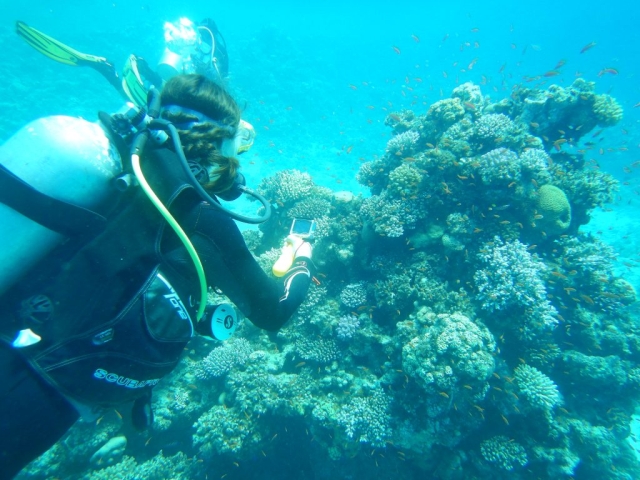PhD defense of Wei Cheng Tan
Wei Cheng Tan has just very successfully defended his PhD thesis!
“Effects of habitat fragmentation on herpetofauna in Southeast Asia: From broad-scale responses to fine-scale responses in an ever-changing anthropogenic landscape“
Abstract
Habitat loss and fragmentation are undoubtedly significant drivers of biodiversity loss worldwide, with Southeast Asia being a hotspot of biodiversity and facing numerous anthropogenic pressures. However, the impacts of habitat fragmentation on biodiversity are still not fully understood, and further research is required to determine the responses of different taxa to this threat. Reptiles and amphibians (herpetofauna), in particular, are among the most threatened groups globally, with Southeast Asia being home to a high diversity of species and facing imminent threats from habitat loss and fragmentation. By combining bibliographic analyses and macroecological methods, this thesis aims to contribute to the knowledge on the current global state of habitat fragmentation research in herpetofauna and the broad and fine-scale responses of Southeast Asian reptiles to various forms of habitat fragmentation.
Chapter 1: This chapter introduces the concepts of habitat fragmentation and its effects on biodiversity. It accentuates the importance of Southeast Asia for habitat fragmentation research due to its complex geological history, high species richness, and rapid habitat loss. It also describes the plight of the Southeast Asian herpetofauna, focusing on their vulnerability to habitat loss and fragmentation in freshwater environments. Lastly, the chapter gives a brief overview of the methodologies and approaches used throughout this thesis.
Chapter 2: Recent decades have seen a surge of funding, published papers, and citations in the field as threats to biodiversity continue to rise. However, how research directions and agendas are evolving in this field remains poorly understood. This chapter presents a global review of past and current state of research on habitat fragmentation for reptiles and amphibians. Here, I systematically reviewed published literatures on habitat fragmentation effects on reptiles and amphibians from 1990 to 2020, with the aim of identifying geographical and taxonomical trends on the various forms of habitat fragmentation, and the sampling methods and response variables commonly employed to identify them. The study reveals several patterns and biases in research efforts, such as the concentration of studies in wealthy and English-speaking countries, and the under-representation of certain regions (e.g. Africa and Southeast Asia) and taxa (e.g. caecilians, fossorial reptiles). It specifically calls for increased attention to these taxa in Southeast Asia, which have received less scientific scrutiny compared to other regions of the world. Moreover, there is a shift in research agendas toward studies utilizing technological advancements including genetic and spatial data analyses. These findings suggest important associations between sampling methods and prevalent response variables but not with the forms of habitat fragmentation. This review suggests the need for more studies on genetic and spatial patterns, with emphasis on underrepresented reptile and amphibian taxa. This chapter sets the context for the subsequent chapters by highlighting the existing gaps in the field.
Chapter 3: This chapter uses species distribution models to investigate the broad-scale responses of threatened semi-aquatic or freshwater reptiles to current and future climatic and anthropogenic conditions. More specifically, it examines the habitat suitability of endangered freshwater crocodiles and turtles and assesses the effectiveness of existing protected areas in conserving these species across Southeast and South Asia (in the Indomalayan realm). Species distribution models are highly successful in predicting potentially suitable habitats of a species based on their environmental niche and presence records. The results suggest that protected areas may be insufficient in the face of current anthropogenic pressures and future climate change. The chapter emphasizes the importance of considering both climatic and non-climatic factors in species distribution models. The results of this chapter are essential for conservation planning and management, as they provide insights into important areas and reserves that should be prioritized.
Chapter 4: This chapter zooms in from a broad-scale to fine-scale view of species response to habitat change, focusing on the effect of logging, which affects more than half of the remaining tropical forests in Southeast Asia. Logging has direct and indirect impacts on freshwater turtle habitats, such as altering stream hydrology and increasing sedimentation. In this chapter, I examine the fine-scale responses of two freshwater turtle species to Reduced Impact Logging, a sustainable forestry method, in Deramakot reserve in Sabah, Malaysian Borneo. I use occupancy models to estimate the probability of species detectability and habitat associations across a post-harvest recovery gradient (1 –21 years since logging), using presence and absence data. Results for the non-threatened soft-shelled turtle, Dogania subplana are inconclusive. However, the study reveals a significant negative association between monthly rainfall and the detection of the threatened hard-shelled turtle, Notochelys platynota. The occupancy probability of N. platynota is positively associated with greater distance from logging roads. Nevertheless, both species appear to be relatively common throughout the reserve. The chapter suggests that forests managed sustainably, i.e. using Reduced Impact Logging could serve as conservation areas for imperiled freshwater turtle species in the region.
Lastly, chapter 5 summarizes the results of this thesis and its implications and contributions to the field. It also considers the limitations of the approaches and methodologies used. Overall, this thesis emphasizes the urgent need for more research on the effects of habitat fragmentation on herpetofauna in Southeast Asia and the importance of incorporating both broad and fine-scale data. This work is a significant step towards providing easily reproducible studies to be used as a baseline to ensure the long-term survival of these vulnerable species in Southeast Asia.
These papers are already published and included in the thesis:
Harrer, S., P. Ginal, W. C. Tan, J. W. Binaday, A. C. Diesmos, R. Manalo, T. Ziegler, and D. Rödder. 2024. Disappearing archosaurs – an assessment of established protected areas in the Philippines to save the Critically Endangered, endemic Philippine Crocodile (Crocodylus mindorensis). Salamandra 60: 29-41. (PDF)
Mobaraki, A., M. Erfani, E. Abtin, J. C. Brito, W. C. Tan, T. Ziegler, and D. Rödder. 2023. Last chance to see? Iran and India as strongholds for the Marsh crocodile (Crocodylus palustris). Salamandra 59: 327–335. (PDF)
Tan, W. C., A. Herrel, and D. Rödder. 2023. A global analysis of habitat fragmentation research in reptiles and amphibians: What have we done so far? Biodiversity and Conservation 32: 439–468. (PDF)
Tan, W. C., P. Ginal, A. G. J. Rhodin, J. B. Iverson, and D. Rödder. 2022. A present and future assessment of the effectiveness of existing reserves in preserving three critically endangered freshwater turtles in Southeast Asia and South Asia. Frontiers of Biogeography 2021, 14.1, e50928. (PDF)

Breeding programs initiated in Vietnam to help turtle species threatened by extinction
Conservationists have initiated breeding programs in Vietnam to recover spotted softshell turtle populations threatened by overconsumption and habitat loss. Based on a literature study, field surveys across Vietnam, and genetic screenings of collected samples, researchers estimated the range and conservation status of Pelodiscus variegatus, the spotted softshell turtle. The data were then used to model the species’ potential range in Vietnam.
Conservation breeding programs are intended to support the protection of the endangered spotted softshell turtle. In order to find out more about their occurrence on the Indochinese mainland, researchers have now published a study on habitat suitability and distribution patterns in the journal Nature Conservation. The study combines molecular analyses and species distribution modeling to identify priority conservation areas.
The study was published with the participation of the Vietnam Academy of Science and Technology (VAST), the Vietnam National University Hanoi and the Asian Turtle Program (Vietnam), as well as the Cologne Zoo and the Leibniz Institute for the Analysis of Biodiversity Change (LIB).
The spotted softshell turtle (Pelodiscus variegatus) has been known from Vietnam and Hainan Island, China, since 2019. It is considered a delicacy in these countries. In China alone, hundreds of millions of turtles are traded every year, making them the most consumed turtles in the world. Habitat loss and degradation, competition with non-native turtle species and habitat pollution are further reasons for the species’ decline.
Although several protected areas in Vietnam appear to offer suitable habitats for this turtle species, the researchers were unable to detect populations in any of the areas studied. “We therefore assume that the spotted softshell turtle is particularly threatened with extinction,” emphasizes PD Dr. Dennis Rödder, Curator of Herpetology at the Museum Koenig Bonn of the LIB.
The results of the ecological modeling show that Pelodiscus variegatus may also occur in Laos. “However, on the border between Vietnam and Laos and in wetlands, we were only able to find patchy evidence of it,” says Rödder, describing the modeling.
Vietnamese conservationists, in collaboration with Prof. Dr. Thomas Ziegler from Cologne Zoo, have launched conservation breeding programs in Vietnam to save populations of the spotted softshell turtle that are threatened by overconsumption, habitat loss and mixing with invasive species.
The researchers calculated the distribution range and conservation status of the spotted softshell turtle based on a literature review, field studies across Vietnam and genetic studies of collected samples. The data was used to model the potential range of the species in Vietnam.
To restore the species’ natural populations, the Institute of Ecology and Biological Resources (IEBR, VAST) in Vietnam and Cologne Zoo have launched an in-country conservation breeding program. By the end of 2023, 50 young and healthy turtles had already been released into the wild in a location with a suitable climate and habitat in northern Vietnam.
Based on the results of the study, it is hoped that further individuals can be reintroduced into protected areas in north-central Vietnam, the distribution center of the spotted softshell turtle. In this way, the consortium hopes to stem the decline of the species and make a further contribution to the global “Reverse the Red” movement – by applying the IUCN’s “One Plan Approach to Conservation”, in which all available expertise works together to optimize species protection.
Soft-shelled turtles of the genus Pelodiscus are widespread from south-eastern Siberia to China and Vietnam. However, human transportation and breeding activities have extended their range to Indonesia, northern Australia, western Europe, North America, Hawaii and Mauritius.
Traditionally, this genus was considered monotypic, i.e. with only one recognized species, the Chinese softshell turtle (Pelodiscus sinensis). However, recent research has shown that the genus is much more diverse and at least seven species are known to science, which consequently have smaller distributions and are more threatened.
“Due to their morphological similarity, expanding settlements and agricultural activities, overexploitation and aquatic lifestyle, it is often difficult to study them in their natural habitat to better understand their distribution as well as their population and conservation status,” says Rödder. “Unfortunately, only part of the species’ potential range is protected so far and there is no known evidence from protected areas, which underlines the need for extended or even new protected areas.”
Original study:
Le MD, Rödder D, Nguyen TT, The Pham C, Nguyen TQ, Ong AV, McCormack TEM, Nguyen TT, Le MH, Ngo HT, Ziegler T (2024) Climatic niche modelling and genetic analyses highlight conservation priorities for the Spotted Softshell Turtle (Pelodiscus variegatus). Nature Conservation 55: 67-82. (PDF)
PhD defense of Philipp Ginal
Philipp Ginal has just very successfully defended his PhD thesis!
“Invasion biology of amphibians and reptiles: From observations to predictive spatial models”
His thesis entitled “Invasion biology of amphibians and reptiles: From observations to predictive spatial models” comprises six publications. Overall, his thesis is broadly folded, and comprises several target species across different taxonomic groups (i.e., anurans, urodeles, squamates), scales (i.e., local, regional, macro-ecological landscapes), and methodological approaches (i.e., population size estimation, connectivity modeling, correlative and mechanistic species distribution modeling, mechanistic quantification of activity time budgets). The focus of my thesis relies on the methodological approaches and therefore, the red line here starts with relatively simple models and ends with a novel, complex mechanistic approach.
Furthermore, three publications consider the African Clawed Frog, Xenopus laevis (Daudin, 1802), which is among the most invasive amphibian species in the world.
Two further publications focus on the Oriental Garden Lizard, Calotes versicolor (Daudin, 1802) complex, a wide-spread but neglected invader with potential negative impacts, and the Italian Cave Salamander, Speleomantes italicus (Dunn, 1923), which is non-native but locally very restricted with no known negative impacts yet. Another publication considers the invasive fungal disease Batrachochytrium salamandrivorans Martel et al. 2013 (Bsal), which has substantial negative impacts on macro-ecological scales, and one of its host species, the European Fire Salamander, Salamandra salamandra (Linnaeus, 1758).
These papers are already published and included in the thesis:
Ginal, P., N. Kruger, C. Wagener, L. Araspin, M. Mokhatla, J. Secondi, A. Herrel, J. Measey, and D. Rödder. 2023. More time for aliens? Performance shifts lead to increased activity time budgets propelling invasion success. Biological Invasions 25: 267–283. (PDF)
Ginal, P., W. C. Tan, and D. Rödder. 2022. Invasive risk assessment and expansion of the realized niche of the Calotes versicolor species complex (Daudin, 1802). Frontiers of Biogeography 14.3, e54299. (PDF)
Ginal, P., M. Mokhatla, N. Kruger, J. Secondi, A. Herrel, J. Measey, and D. Rödder. 2021. Ecophysiological models for global invaders: Is Europe a big playground for the African clawed frog? Journal of Experimental Zoology – Part A: Ecological and Integrative Physiology 2020: 158-172. (PDF)
Ginal, P. C.-H. Loske, T. Hörren and D. Rödder. 2021. Cave salamanders (Speleomantes spp.) in Germany: tentative species identification, estimation of population size and first insights into an introduced salamander. Herpetology Notes 14: 815-822. (PDF)
Ginal, P., F. D. Moreira, R. Marques, R. Rebelo, and D. Rödder. 2021. Predicting terrestrial dispersal corridors of the invasive African clawed frog Xenopus laevis in Portugal. NeoBiota 64: 103–118. (PDF)
André Vincente Liz: PhD defense
Comparative phylogeograpy of the Sahara – Sahel: a spatiotemporal approach to biodiversity dynamics in the largest warm desert on erth
Our PhD Student André Vincente Liz just successfully defended his PhD thesis, congratulations! A full recording of the defense is provided by the University of Porto.
Abstract
The Sahara-Sahel environments are home to rather endemic desert biotas highly adapted to the region’s aridity constraints and the dry/humid climatic cycles that took place throughout the Plio-Pleistocene. Species’ contemporary patterns harbour a crucial potential to understand the impacts of these steep fluctuations on the desert’s landscape, as well as to develop integrative conservation agendas that help preserving a highly vulnerable local wildlife. Yet, this baseline biological knowledge has been traditionally lacking for the region. With the advent of molecular phylogeography at the end of the 20th century, biodiversity studies in the Sahara-Sahel have started unravelling novel aspects of its intricate natural history, primarily how palaeoclimatic and subsequent land-cover shifts have shaped the distribution and genetic structure and diversity of local species by triggering different eco-evolutionary processes. Core biogeographic and evolutionary hypotheses have been posed, including population divergence in allopatry, which often led to speciation, dispersal and colonisation of new environments, including trans-Saharan migrations across the desert, or events of secondary contact. Notwithstanding the remarkable recent advances in regional research, biodiversity patterns in some of the most unique features within the region’s eco-physiographic diversity remain virtually unknown. Besides, the phylogeographic scenarios that have been proposed lack corroboration under a common framework.
Aiming to provide the first comprehensive picture of biodiversity patterns in the Sahara-Sahel, this thesis builds upon a comparative phylogeography framework that seeks to verify and expand the major biogeographic and evolutionary questions posed for the region. For this purpose, I assessed all publicly available DNA data for Sahara-Sahel vertebrates (i.e., >1,000 species) and selected the most relevant taxa based on data availability and species’ distribution within the study area. I tested phylogeographic scenarios through the integration of different molecular and eco-geographic analyses, including phylogenetics, phylogeography, population genetics, species distribution modelling (SDM), and geostatistics. These analyses allowed inferring the location of ecological refugia, dispersal corridors, and hotspots of intra-specific diversity for regional species according to their habitat requirements, i.e. those more- (xeric) or less (mesic) adapted taxa to the desert’s extreme aridity. Considering that the advent of arid conditions in North Africa triggered the diversification of the most xeric taxa, examining the phylogenetic ages of these species allowed estimating the chronology of the Sahara for the first time from a biological point of view. During the development of this thesis, I also generated new biodiversity data that allowed examining phylogeographic hypotheses in poorly known regions of the Sahara-Sahel, which yet constitute key elements to understand the region’s natural history. Specifically, I (1) addressed the role of Central Sahara highlands in historical biodiversity dynamics, and (2) examined biodiversity patterns throughout the hyper-arid Sahara.
Notably, the phylogenetic insights brought by xeric taxa suggest that the onset of aridification in North Africa occurred in the Mid Miocene, contrasting remarkably with geological and climatological findings. The age of the Sahara is still a controversial topic; evidence for this is that new studies keep reporting contrasting estimates: from 7 up to 11 Myr. This thesis provides the first comprehensive chronology for the impact of regional aridification on Saharan wildlife. Beyond vertebrates, this work also looked at the age of the remaining taxonomic groups for which molecular data was available (i.e., scorpions), given the low number of species that occupy the desert’s extreme environments. This analysis highlighted the need for systematic assessments on Saharan xeric arthropods, such as beetles, spiders or grasshoppers, which present profound knowledge shortfalls despite being major elements within the region’s biological diversity.
Concerning the lack of phylogeographic knowledge for some of the least known regions of the Sahara-Sahel, two studies were conducted. In the first one, I assessed whether the mountains of Central Sahara acted as historical ecological refugia and diversification hotspots for mesic taxa, while also aided in trans-Saharan faunal translocations during humid desert stages. Insights come from the phylogeographic assessment of Acanthodactylus boskianus, a species complex inhabiting mesic environments and distributed at both sides of the desert and in scattered populations throughout the Central Sahara highlands. Results revealed that mountains in Southern Algeria (i.e., Tassili N’Ajjer, Ahaggar), South-western Libya (i.e., Fezzan, Akakus), Niger (i.e., Aïr), and Northern Chad (i.e. Tibesti) harbour historical climatic stability that favoured the local persistence of A. boskianus. Besides, the few genetic samples available from the region recovered high local lineage diversity, with reports of old and mountain endemic clades. Lack of genetic differentiation between some Mediterranean, Central Saharan, and Sahelian populations suggest the existence of recent gene flow between both sides of the desert, which could be explained through the intermittent ecological suitability here observed across interconnected Central Sahara mountainous refugia. In the second study, I analysed the genetic structure and diversity of species inhabiting the most arid environments of the Sahara, where knowledge on biodiversity patterns was almost inexistent. For this purpose, I conducted a phylogeographic assessment of the Acanthodactylus scutellatus complex, which embeds six currently recognised species that possibly comprise the most widespread vertebrates across hyper-arid Saharan habitats. Results recovered surprisingly high levels of intra-specific diversity, including several previously unknown sympatric or parapatric lineages that exhibit both nuclear and mitochondrial differentiation, suggesting species status. These findings evidence that biodiversity estimates for xeric Saharan habitats are likely neglecting a notable amount of undescribed diversity, which seemingly originated in allopatry due to the steep habitat fluctuations that took place throughout the Plio-Pleistocene. Interestingly, the origin of some of these lineages dates back to the Miocene, coinciding with the onset of dry/humid fluctuations in North Africa. Some environments of the northern Sahara, such as the Algerian ergs (i.e., sand-dune fields), were found to be particularly rich in terms of intra-specific diversity. A contrasting pattern was found across southern Sahara latitudes and the Sahel, where the lack of genetic differentiation between distant populations suggested that population dispersal at this latitude was common. The assessment of individual lineage genetic imprints allowed delimiting potential areas of refugia within these desert corridors, however, fine-scale research is needed to clarify whether they correspond to specific landscape features such as palaeolakes, ergs or mountain outskirts.
The primary component of this thesis was the comparative phylogeography assessment, which I conducted after setting the biological chronology of the desert, generating additional data, and refining key phylogeographic hypotheses. This meta-analysis was conducted through the integration of molecular and ecological components for 107 selected desert taxa, including reptiles, mammals, amphibians, and scorpions. During this process, roughly 8,500 DNA sequences were analysed, most of them corresponding to published data retrieved from GenBank and some newly produced to fill key taxonomic and geographic gaps. The analyses of DNA information allowed estimating areas of high genetic diversity and connectivity for each individual species, as well as for the mesic and xeric communities. The molecular component was integrated with an SDM approach, which expanded the methodological framework traditionally applied to biodiversity assessments in the deserts of North Africa. As such, I incorporated for the first time historical hydrological and vegetation data into the SDM pipeline, thus considering previously overlooked ecological dimensions which likely played a major role in historical species responses to dry/wet fluctuations. The historical shifts in species’ range were modelled for the selected 107 taxa using over 28,000 observation records. Results allowed verifying the major biogeographic and evolutionary questions previously proposed for the region. Patterns of intra-specific diversity confirm that the isolated mountains of Central Sahara are important centres of diversity, several of which still lack baseline biodiversity knowledge, with clear examples in Chad (i.e., Tibesti, Ennedi) and Sudan (i.e., Jabal Marrah). High diversity was also found across the northern Sahara for xeric taxa, suggesting that this region harbours a crucial role in the evolution and persistence of truly-desert species, despite local biodiversity patterns being also poorly known. Refugia inferences corroborate the importance of the Atlantic region for most of the species, as well as northern Sahara areas for xeric taxa and mountains for mesic taxa. Additionally, patterns of genetic and ecological connectivity confirm that corridors across Central Sahara highlands played a major role in trans-Saharan dispersals, which can be comparable to that of the Nile Valley and the Atlantic Coast.
This thesis provides integrative knowledge that can be immediately applied to biodiversity conservation agendas in the deserts of North Africa, as well as to the study of biodiversity in deserts and arid regions. In addition, insights on species’ genome and habitat imprints expand our understanding of the natural history of the region, with implications for the evolution and migration of both the desert’s endemic biotas and the early humans that peopled the Sahara and dispersed out of Africa at the end of the Quaternary. Besides, this thesis opened new biogeographic and evolutionary questions that would require additional research efforts, as well as pinpointed areas of dramatic biodiversity shortfalls that should be targeted in future studies.
Parts of his thesis are already published:
Liz, A. V., D. Rödder, D. V. Gonçalves, G. Velo-Antón, M. M. Fonseca, P. Geniez, P.-A. Crochet, and J. C. Brito. 2023. Overlooked species diversity in the hyper-arid Sahara Desert unveiled by dryland-adapted lizards. Journal of Biogeography 50: 101–115. (PDF)
Liz, A. V., D. V. Gonçalves, G. Velo-Antón, J. C. Brito, P.-A. Crochet and Rödder, D. 2022. Adapt biodiversity targets to climate change. Science 376: 589-590. (PDF)
Liz, A. V., D. Rödder, D. V. Gonçalves, G. Velo-Antón, M. M. Fonseca, P. Geniez, P.-A. Crochet, and J. C. Brito. 2021. The role of Sahara highlands in the diversification and desert colonisation of the Bosc’s fringe-toed lizard. Journal of Biogeography 48: 2891–2906.
Egypt Excursion 2023
We are just back from this year´s trip to Egypt! My students and I had a great two weeks of lectures and hands-on experience in a tropical coral reef. Spending many hours on snorkeling and diving we are still determining marine life. The species list contains already over 200 taxa and the numbers are still growing. Here are some impressions from the excursion.
Assessment of the threat status of reptile species from Vietnam – Implementation of the One Plan Approach to Conservation
Just published:
Subsequent to a recently published study in Nature Conservation highlighting the gaps in the protection of Vietnam´s amphibians, Thomas Ziegler and his international cooperation team now present another threat analysis, this time dealing with a detailed assessment of Vietnam’s reptile fauna to uncover gaps in conservation.
Globally, reptiles are considered a group of special conservation concern, as they play an important role in almost all ecosystems and often have relatively small distribution ranges, making them especially vulnerable to anthropogenic threats.
As Vietnam’s herpetofauna is among the richest in the world and particularly threatened due to habitat loss and overharvesting for traditional medicine, pet trade, and food, it is critical to assess their conservation status.
The publication was based on the bachelor thesis of Lilli Stenger conducted at the University of Cologne, Germany. “Being able to focus my bachelor thesis on the threat status of the reptiles extant in Vietnam was a great opportunity and I am proud of this contribution,” says Lilli Stenger about her thesis project performed in Ziegler’s lab at the Cologne Zoo, Germany.
The scientists identified 484 reptile species known from Vietnam, noting that the number is likely to go up, as the country is regarded as a top biodiversity hotspot, and the rate of new reptile species discoveries remains high. As many as 159 (33%) reptile species are endemic to the country, with more than half of them (55%) reported exclusively from only a single locality, making them especially vulnerable to extinction.
“With 131 subregional endemic species and 88 of them restricted to their type locality, the country needs to establish additional local conservation areas to safeguard the microendemic species.” explains one of the authors of the present study, Prof. Dr. Truong Quang Nguyen of the Institute of Ecology and Biological Resources (IEBR), Hanoi.
According to the IUCN Red List of threatened species, 74 of the 484 species recorded from Vietnam are classified as threatened with extinction, including 34 endemic species. Most of threatened reptiles are lizards, followed by snakes and turtles, with 100% of the species in Vietnam listed as Vulnerable or higher. For more than half of Vietnam’s endemic reptiles (85 out of 159), the IUCN Red List status is either missing or outdated and further research is imperative for these species, the researchers say.
According to species richness maps, the Central Annamites region in central Vietnam harbors the highest endemic species diversity (32 species) as well as highest subregional endemic species diversity (21 species), which highlights it as a site of particular importance for reptile conservation.
“Integrating microhabitat level species richness maps and spatial patterns of local endemism rates is essential to identify priority areas for further conservation measures as habitat loss and increased anthropogenic pressures in these areas would adversely affect a higher number of species than it would in other areas” explains Associate Professor Dr. Dennis Rödder, curator of herpetology of the Leibniz Institute for the Analysis of Biodiversity Change, Museum Koenig in Bonn, Germany.
Alarmingly, a protected area analysis showed that 53 of the 159 endemic species (33.2%) including 17 threatened species, have been recorded exclusively from unprotected areas, such as the Critically Endangered Gia Lai Bent-toed Gecko or Endangered Peter’s Butterfly Lizard and Psychedelic Rock Gecko.
“For these species as well as for the 28 species considered Data Deficient (DD) or those whose conservation statuses have not been evaluated (NE), population assessments should be undertaken as quickly as possible to design appropriate conservation measures in due time,” says co-author Dr. Cuong The Pham from IEBR.
Successful protection must also include the listing of the most threatened endemic species in national and international legislations to provide them with additional support, as many threatened and/or endemic species are still missing from those legislations. The Vietnamese-German team already could achieve first promising results such as the inclusion of some threatened Vietnamese lizard species in the appendices of the Convention on International Trade in Endangered Species of Wild Fauna and Flora (CITES), but more of such advances are still needed.
According to data from Species360’s Zoological Information Management System (ZIMS), 109 (22.5%) of the total 484 species reported to occur in Vietnam are represented in global zoos, with the highest diversity concentrated in facilities in Europe and North America. However, only 6.3% (10 out of 159) of the Vietnamese endemic species are maintained ex situ, thus it is crucial that zoos consider shifting their focus to commit more resources to threatened endemic species.
In order to successfully protect threatened species and meet the objectives of the One Plan Approach of IUCN’s Conservation Planning Specialist Group (CPSG), which refers to the interaction of “in situ” (on site) and “ex situ” (in zoos and stations) measures involving various expertise and thus enabling optimized, contemporary species conservation, ex situ populations must be included in global conservation planning. “This is intended to support the in situ conservation efforts and to buy time as well as to save species from going extinct, as ex situ populations still are available for reintroductions” says co-author Anna Rauhaus, section keeper in Cologne Zoo’s Terrarium division, where 36 species of herpetofauna from Vietnam are held, 19 of them threatened and 25 species of them successfully bred, and most of them connected with in situ conservation measures in Vietnam. .
“Two most endangered turtle species in Vietnam and in the world, the Vietnamese pond turtle (Mauremys annamensis) and the Yangtze giant softshell turtle (Rafetus swinhoei), illustrate the significance of ex situ conservation measures. Both of the species are also not known from any protected area. While Mauremys annamensis is likely to be extinct in the wild, Rafetus swinhoei is on the brink of extinction. Whereas ex situ conservation programs have been implemented in time for Mauremys annamensis with a high number of individuals being kept and bred in zoos and stations, unfortunately, no such initiative has been established for Rafetus swinhoei”, Prof. Dr. Minh Le from the Hanoi National University emphasizes.
“In this regard, modern zoos, as well as local facilities, can play a crucial role in not only conducting or financially supporting in situ conservation projects, but also by protecting species from extinction through maintaining ex situ assurance colonies to reinforce in situ conservation programs, once needed. The Cologne Zoo in Germany and its partner, the Melinh Biodiversity Station in Vietnam, have already successfully implemented a number of conservation breeding initiatives for highly threatened species such as Vietnamese crocodile lizards or Tiger geckos “ explains Prof. Dr. Thomas Ziegler, Vietnam conservation team member and coordinator from Cologne Zoo, Germany.
The present study aims to provide a baseline to authorities, conservationists, rescue centers, and zoos, so that they can follow up with appropriate conservation measures for endangered Vietnamese reptiles.
ICVM 2023, Cairns, Australia
My PostDoc Dr. Jendrian Riedel joint the 13th International Congress of Vertebrate Morphology in Cairns, Australia, presenting our results on gecko morphology. The conference was a great opportunity to meet vertebrate morphologists from across the globe, with many fantastic presentations spanning a wide range of organisms, methods, and research questions.
Evolution of phalangeal morphology in an ecomorphological gecko radiation with incipiently expressed adhesive toepads
Jendrian Riedel, Mariam Gabelaia, Jonas Dreesmann, Jannis Manno, Timothy Higham, L. Lee Grismer, Dennis Rödder, Benjamin Wipfler, Anthony P. Russell
Adhesive toepads, complex morphological structures enabling animals to exhibit astonishing climbing abilities, have evolved multiple times in geckos. Although well studied in a few exemplar clades in terms of function and morphology, their evolution is poorly understood, in part due to the scarcity of studies on incipiently developed toepad morphologies. One lineage within which incipient toepads has been suggested to have arisen is the genus Cyrtodactylus (bent-toed geckos), an ecologically diverse radiation, whose climbing members possess enlarged subdigital scales. The limited data available suggested that some members of the clade could be arranged in morphotypic series showing gradual changes in digit osteology from padless to pad bearing forms. With the phylogeny of the genus now much better resolved and knowledge about their microhabitat use greatly enhanced, we are now able to conduct a phylogenetically informed investigation of digit osteology using microCT data and applying 3D geometric morphometrics. We explored whether, and if so how, repeated gradual changes in digit osteology have occurred in scansorial species and whether such modifications differ depending on the locomotor substrate (e.g., arboreal vs. saxicolous species). We found that distinct morphological changes have arisen repeatedly in scansorial species descending from generalist ancestors. These adaptations are substrate specific for at least some of the phalanges, differing between arboreal and saxicolous species, although there were differential degrees of overlap in other phalanges.
Inaugural lecture: Pandemics in the Animal World
Save the date!
May 24th, 2023, 10.15 a.m., lecture hall VIII, main building University of Bonn
Inaugural lecture as “Privatdozent” (Associate Professor)
Pandemics in the Animal World
Dr. Dennis Rödder
Since 2020 at the latest, the topic of pandemics has gained considerable public attention. In addition to diseases that can occur relatively quickly in humans across large regions, there are also a large number of diseases that can occur in animals. In addition to natural migration movements of the animals, human activities such as the wildlife trade or the globalization of the meat industry are increasingly playing a role in their spread. Infectious diseases can occur in a wide variety of organisms – from invertebrates to fish, amphibians, reptiles, birds and mammals – and sometimes even jump between different groups. Their effects can be multidimensional and very complex. They range from changes at the population level to (local) extinction events, changes in food webs and sometimes serious medical and/or economic consequences for us humans. The lecture gives an exemplary overview of various epidemics / pandemics of the last decades, such as the amphibian fungi Batrachochytrium dendrobatidis and B. salamandrivorans, fungal infections in snakes and bats, bird flu and African swine fever. Their discovery, propagation mechanisms, effects on biological systems and ways of limiting them are presented.
More information can be found here
A global analysis of habitat fragmentation research in reptiles and amphibians: what have we done so far?
Our new review on habitat fragmentation research in amphibians and reptiles is just published in Biodiversity and Conservation early online! My PhD student Nicholas Tan did a great job analysing the global patterns of research agendas based on more than 1400 papers, comparing methodological and taxonomic biases across geographical regions. The full text is available here:
Habitat change and fragmentation are the primary causes of biodiversity loss worldwide. Recent decades have seen a surge of funding, published papers and citations in the field as these threats to biodiversity continue to rise. However, how research directions and agenda are evolving in this field remains poorly understood. In this study, we examined the current state of research on habitat fragmentation (due to agriculture, logging, fragmentation, urbanisation and roads) pertaining to two of the most threatened vertebrate groups, reptiles and amphibians. We did so by conducting a global scale review of geographical and taxonomical trends on the habitat fragmentation types, associated sampling methods and response variables. Our analyses revealed a number of biases with existing research efforts being focused on three continents (e.g., North America, Europe and Australia) and a surplus of studies measuring species richness and abundance. However, we saw a shift in research agenda towards studies utilising technological advancements including genetic and spatial data analyses. Our findings suggest important associations between sampling methods and prevalent response variables but not with the types of habitat fragmentation. These research agendas are found homogeneously distributed across all continents. Increased research investment with appropriate sampling techniques is crucial in biodiversity hotpots such as the tropics where unprecedented threats to herpetofauna exist.



Spatiotemporal habitat use and impacts of habitat fragmentation on Lizards
My group just published two new papers on the effects of habitat loss on tick load in the eastern green lizard Lacerta viridis and spatiotemporal patterns of habitat use by the sand lizard Lacerta agilis. Both studies required numerous hours of fieldwork and many students were involved. Special thanks to all of them for their enthusiasm!
The distribution and occurrence of a species in its habitat are inevitably linked to its ecology. To successfully monitor and protect species, it is important to investigate which species-specific factors influence its interactions with the environment. In this study, we focus on patterns in habitat use of the Sand Lizard (Lacerta agilis). Differences in seasonal, as well as sex and size class-dependent habitat use, have been reported from the edges of this species’ range. To verify such trends in the core area of its distribution, we analyzed the habitat factors weather, microclimate, microhabitat structures, and time dependence, which may have an impact on the use of space of the Sand Lizard. Using generalized linear models, hypervolumes, density estimations, and Chi-squared tests, we found that the movement patterns of individuals can neither be described by time differences, climatic conditions, or habitat composition nor do they show habitat- or weather-related differences of movement between sexes or size. Here we demonstrate that in the case of a population from the core of this species’ distribution area in the Dellbrücker Heide (Germany), habitat use is solely influenced to a low degree by differences related to the ontogeny of Sand Lizards and does not depend on any of the other evaluated factors. These results are in enormous contrast to findings in populations from the periphery of their distribution, i.e., the United Kingdom, Latvia, Romania, Bulgaria, and the Pyrenees. This implies that seasonal habitat shifts are more extreme at the edges of the range of L. agilis, serving to compensate deteriorating habitat conditions in the periphery.

Habitat loss can increase the susceptibility of individuals to parasitic infections, and hence, parasite load can serve as an early warning indicator of stress before the persistence of a population becomes threatened. In this study, we tested the effects of patch characteristics, isolation and landscape composition resulting from habitat loss on the tick load of individuals from central populations of the Eastern Green Lizard Lacerta viridis. We identified the spatial scale at which each landscape composition parameter has the strongest effect and evaluated its effects at this scale. Additionally, we tested the relationships between tick load and population density and body condition (BC) to understand possible mechanisms that determine tick loads in populations. We found that tick load was not affected by host population density. BC was not found to be affected by tick load, but BC did have a negative effect on lizards’ tick loads. The proportion of habitat and cropland in the landscape and patch size had positive effects on tick loads, whereas the proportion of urbanized areas, isolation and perimeter/area ratio had negative effects. We discuss our finding in the context of how the landscape can affect tick populations and other potential hosts. We conclude that tick load can be a suitable early warning indicator of negative effects of habitat loss, reflecting the susceptibility of lizards to infestation. We suggest that this indicator be included in monitoring programs aiming at evaluating the status of populations of L. viridis in modified landscapes, and recommend that conservation measures be focused on the protection of habitat at broader scales to compensate negative effects of cropland and urbanized areas occurring at small scales.
